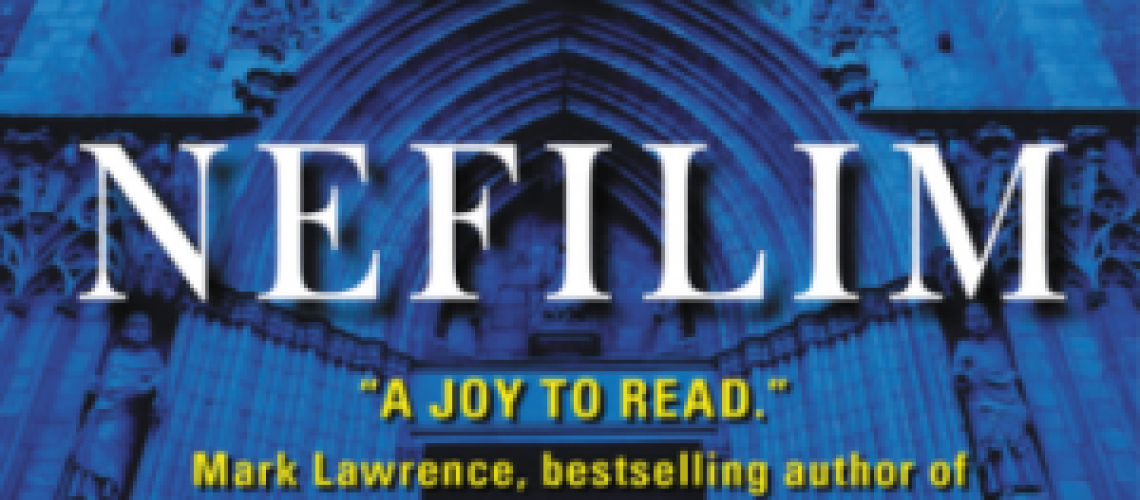The 1930s of Spain was a time and place marked by terrible oppression, a vicious civil war immortalized in works of the time such as Picasso’s Guernica and Hemingway’s For Whom the Bell Tolls. It’s a setting relatively near at hand in time and space, but one which has only modestly been depicted and inspirational to the world of genre fiction. The film Pan’s Labyrinth, notably, captured the brutality of the period in the story of Ofelia and her connection to faerie, even as the unredeemable wickedness of her stepfather shines through the narrative of the film like a witchlight. Ian Tregillis’ novel Bitter Seeds takes the popular tack that the Spanish Civil War was a rehearsal for the Second World War in having his German supermen field test their developing powers during the conflict.
T. Frohock’s trio of novellas, set in her dark fantastic Los Nefilim universe takes place in the years just before the full breakout of hostilities.

While there isn’t a raging battle between the Nationalists and the Republicans in the streets and fields of Spain as yet, the clouds on the horizon are unmistakable, and building and growing day by day. The foreshadowing of the Second World War is set up early in IN MIDNIGHT’S SILENCE, the first novella in the trilogy, as the struggle between Daimons (Demons) and Angels, and those caught in between, like Diago, threatens to distort and change the mortal world’s own march to conflict in horrible ways.
And yet, for all of the conflict between Angels and Demons, the drumbeat toward Civil War and the forthcoming Second World War, I think what is the real heart of the novel is a light in the darkness of the world, the relationships between the characters. The author does an excellent balancing act in showing how ostracizing the Miquel-Diago relationship is, in terms of gender, in terms of Diago’s halfbreed nature, in terms of how it stands with the mores of the society all around. It would have been the easier path, perhaps even the typical path, for the author to write this as a tragedy, as a love that is and was destined to be broken apart by the forces of time, and custom, and place, and society.
The author, however, takes a completely different path, as the story continues through WITHOUT LIGHT OR GUIDE and through to THE SECOND DEATH. Are there challenges, difficulties, arguments, fights and ups and downs in the relationship between the pair? Absolutely. It’s a real, intense, believable, imperfect and yet loving relationship that the characters have. There are no easy answers, no magic wands, just the work and effort needed in building and maintaining a relationship, especially one where all the forces in the penumbra of worlds and societies seem destined to pull them apart. Take the existence of Diago’s son Rafael. In many ways, the revelation of his existence to Diago and the rest of the Angels and Daimons is the “inciting incident” that drives the events of the novel, as he becomes a pawn as much as Diago himself is between the various factions. It would have been easy for the author to use Rafael solely as a plot device, a lever to move the characters toward one pole or another. And what Rafael goes through is not easy, or bright; the dark fantastic elements of the narrative do not spare him. And yet, the author spends copious time with Diago coming to terms with the fact that he has had a son, against his will, and what his duty and what his love means for him. The nuclear family of Miquel-Diago-Rafael is not a typical one, and the author does an excellent job in showing how these characters grapple with the effort needed to build and maintain a relationship, as well as its ultimate rewards.
I recommend the Los Nefilim Trilogy to readers and enjoyers of historical fantasy, especially those who don’t mind their fantasy running toward places steeped in dark fantasy, if not the borderland of horror itself. And especially readers as interested in character as they are in the more visceral depictions of evil. I do not think that the Los Nefilim novellas are truly horror, because of the author intentions and evident goals in the narrative. The author does not seem to want, in the narrative, to have as her primary effect to horrify, scare and disturb the reader. She does, however, even within the candlelight of joy in the Miquel-Diago relationship, to show that there is darkness in the world, that there are monsters, but that there is always light as well.







